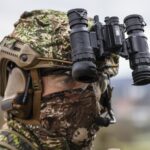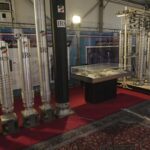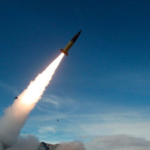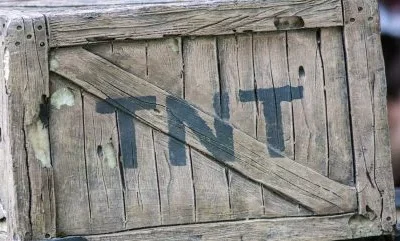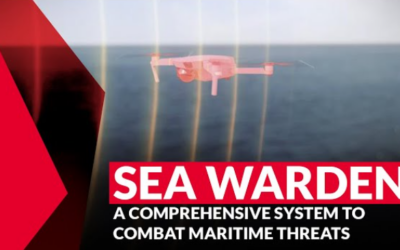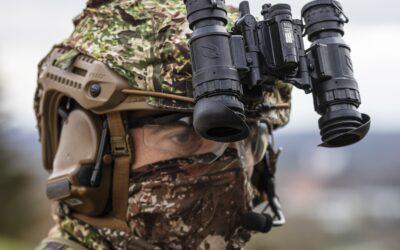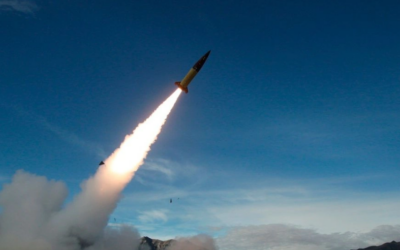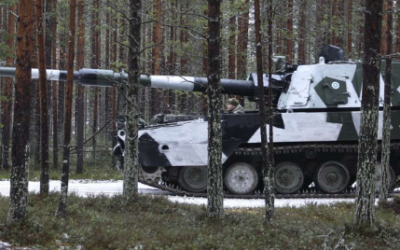As part of its quest to boost weapons production, the US Army is reestablishing TNT production on US soil, inking a deal to build out a…
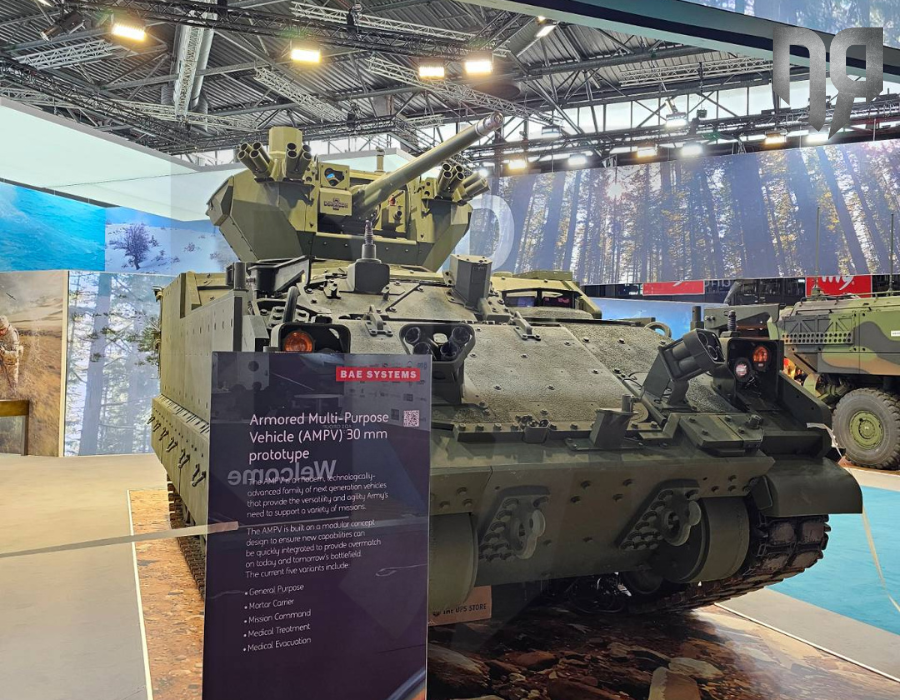
In continuation of our tour to BAE Systems’ pavilion during the EUROSATORY 2024 Defence and Security exhibition, DEFENCE REDEFiNED seized the opportunity to get informed about the rest of the exhibited platforms of the company, which we present below.
Armored Multi-Purpose Vehicle (AMPV)

To begin with, the multinational defence materiel manufacturing company unveiled its intent to develop a hybrid-electric version of its Armored Multi-Purpose Vehicle (AMPV). The AMPV is a family of next-generation, highly survivable tracked combat vehicles.
The AMPV family consists of five, multi-mission variants including the General Purpose, Mortar Carrier, Mission Command, Medical Treatment and Medical Evacuation vehicles.
AMPVS’ specifications:
- Seating capacity: Up to eight
- Width: 3.7 m
- Height: 3.1 m
- Ground clearance: 0.4 m
- Maximum speed: 61 km/h
- Gross weight: 36,000 kg
- Engine: Cummins diesel engine with a maximum power output of 600 hp
- Maximum range: 362 km
The platform at issue was displayed as a turreted version integrating Oshkosh Defense’s Medium Caliber Weapon System (MCWS) turret. This turret has its roots in the Rafael Samson 30 mm unmanned turret.
According to BAE Systems, the integration of the MCWS serves the purpose of proving the External Mission Equipment Package (ExMEP) capacity to allow an array of systems to be mounted on top of the platform. Operating as a common top hull plate, the package can potentially accommodate approximately 30 different turrets.
In general terms, this prototype demonstrates the vehicle’s ability to integrate various capabilities and equipment packages. As such, this solution allows any user to rapidly integrate weapon systems to address various mission requirements.
Indicatively, the latest prototype features Elbit America’s UT30, a 30mm unmanned turret.

Photo: BAE Systems
The AMPV CUAS prototype features the Moog Reconfigurable Integrated-weapons Platform (RIwP) turret, common to the U.S. Army’s Mobile Short Range Air Defense (M-SHORAD) system.

Photo: BAE Systems
The AMPV Mortar Carrier variant comprises the Patria Nemo legacy 120 mm mortar system.
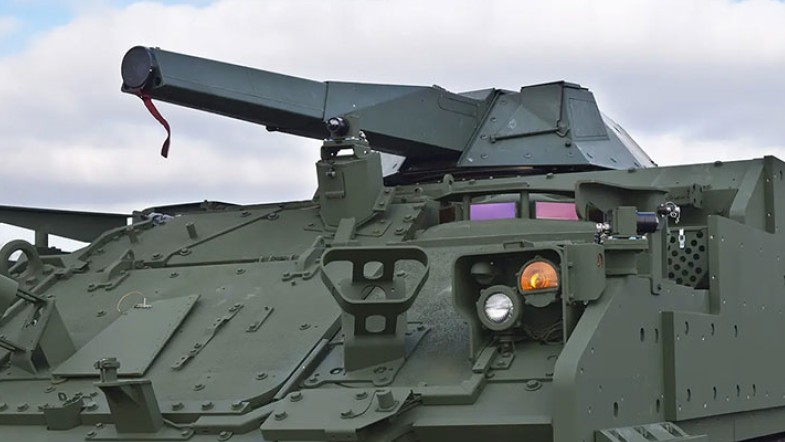
Photo: BAE Systems
BAE Systems has received a $754 million contract award from the U.S. Army to continue manufacturing the AMPV Family of Vehicles (FoV), guaranteeing a second phase of full-rate production (FRP) volumes through February 2027. This follows the original $797 million FRP contract awarded in August 2023.
Also read: BAE Systems | Delivery of new AMPV prototype to US Army
CV90 MkIV
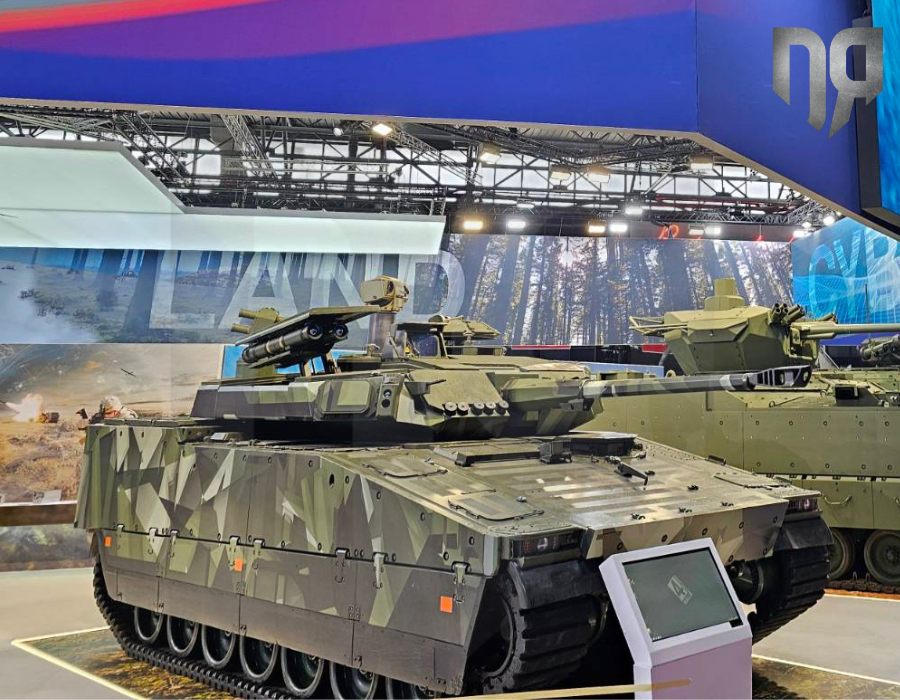
BAE Systems also introduced its CV90MkIV variant with a new turret, soon to be delivered to Slovakia and the Czech Republic in close cooperation with their defence industries, which represents the most recent evolution of the CV90 family of vehicles.
The CV90 MkIV tracked infantry fighting vehicle on display had a number of new observation and protection features that should provide the vehicle crew with effective protection and high situational awareness on the modern battlefield.
For starters, the CMS-1 Commander multi-sensor electro-optical system developed for various weapon stations by the Czech company EVPÚ Defence, can be observed. In its standard configuration, the system includes a daytime HD camera, a cooled thermovision unit with an 18 km range, and a laser rangefinder along with wipers for both optical channels.
Regarding lethality, the CV90 can be typically equipped with a two-man turret and a 25-35 mm Bushmaster cannon. Nonetheless, the CV90 can support different armament configurations, including new family modular digital design (D-series) turrets, capable of being equipped with a wide range of gun cannons (30/40, 35/50, and 120 mm) as well as anti-tank missiles and machine guns.
We note that at EUROSATORY 2022, the CV90 MK IV was armed with a pair of SPIKE LR2 anti-tank missiles and a 7.62mm coaxial machine gun, in addition to the 35mm Bushmaster III main chain gun (featuring a rate of fire of up to 200 rounds/minute). Different missile systems such as MBDA’s AKERON may also be integrated.
Also read: CV90 MK IV | Displayed at EUROSATORY 2022 with SPIKE and IRON FIST – VIDEO
Further, the vehicle’s hunter-killer function allows the commander to search, engage, or delegate targets to the gunner.
Moreover, the platform offers modular protection for its crew against heavy weaponry, IEDs, and anti-tank mines, apart from protection against Chemical, Biological, Radiological, and Nuclear (CBRN) agents through its CBRN/HVAC system. Additional protection options may include add-on armor kits, a Defensive Aid Suite (DAS) for countermeasures deployment, and ADAPTIV camouflage for active multi-spectral cloaking.
In terms of mobility, the system is powered by a V8 diesel engine, which provides the user with an operational range of up to 900 km, while its active damping system enhances off-road speed and increases the gunner’s hit probability.
Additionally, the CV90 integrates an open electronic architecture allowing the integration of current and future C4ISTAR and communication solutions.
Generally, the CV90 family offers configurations such as Infantry Fighting Vehicle, Reconnaissance, Command & Control, Anti-Aircraft Vehicle, Mortar, Combat Repair, and more.
According to the company, with a total of 1,700 vehicles ordered in 17 different variants, the CV90 has covered more than 8 million km being selected by 10 European nations, eight of them NATO members, and has seen combat in Afghanistan and Ukraine, as well as operations in Liberia.
The Netherlands will collaborate with Denmark and Sweden to manufacture CV90 Infantry Fighting Vehicles (IFVs) for Ukraine. This initiative involves an allocation of €400 million to a Swedish fund dedicated to producing these vehicles.
Sweden, for the record, has already delivered 50 CV90 infantry fighting vehicles (IFVs) to Ukraine. This donation was part of a larger package of military aid that also included other equipment, such as Archer artillery systems. The delivery of these CV90s was officially announced earlier in the year, and the vehicles have already been spotted on the battlefield in regions like Donetsk.
Also read: BAE Systems | 15-year support agreement signed for Denmark’s CV90 fleet
M777A2 155 mm Howitzer
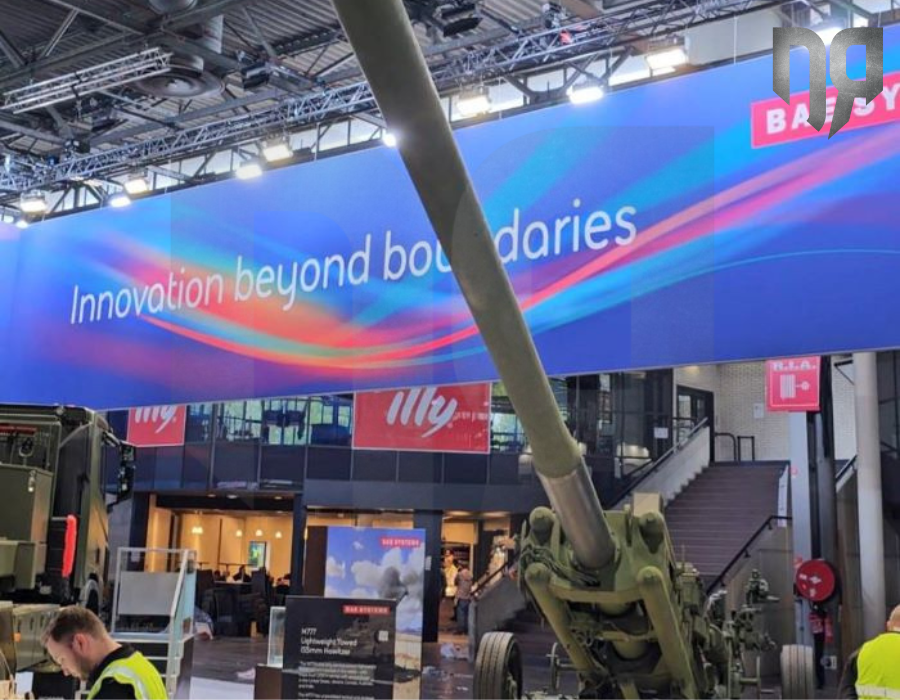
BAE Systems showcased the M777 A2 39-caliber Howitzer, a 155mm lightweight artillery system. This howitzer features reduced thermal and radar signatures and is capable of rapid deployment and quick displacement (deployment in less than three minutes and removed between two and three minutes). Weighing almost 4,5 tons, the M777 is the only existing first 155mm Howitzer of this weight category.
At the same, it is highly mobile and easily transportable by land, sea, and air, being compatible with a variety of towing vehicles, vessels and fixed-wing aircraft, thus requiring minimal logistical footprint.
In terms of ammunition, the howitzer can use all current and developing 155 mm standard munitions. This compatibility ensures that the M777 can easily integrate into different weapon systems and meet future requirements.
The M777 is designed to provide fire support at a maximum distance of 24.7 km unassisted and over 30 km with assistance, thanks to its assisted firing system. Its firing rate allows it to launch four shells per minute in intense mode for up to two minutes, and two shells per minute in sustained mode.
Regarding its firing parameters, the M777 howitzer offers a maximum elevation of +1,275 mm and a depression of -43 mm, with a traverse capacity of 10.16 mm to the left and right on the mount, which is expandable up to 163 mm.
Following Russia’s invasion of Ukraine in 2022, the United States, Australia, and Canada provided M777 howitzers to the Ukrainian army. Aside that, the performance and reliability of the artillery system in question have been proven in combat, particularly during its deployment in Afghanistan since 2006, where it fired over 360,000 rounds.
The system has been adopted by several international forces, including those of the United States, Canada, Australia, and India, with total orders currently exceeding 1,200 units.
Also read: BAE Systems | HyperVelocity Projectile showcased at AUSA Global Force Symposium 2024
Amphibious Combat Vehicle ACV-30 (30 mm Cannon)
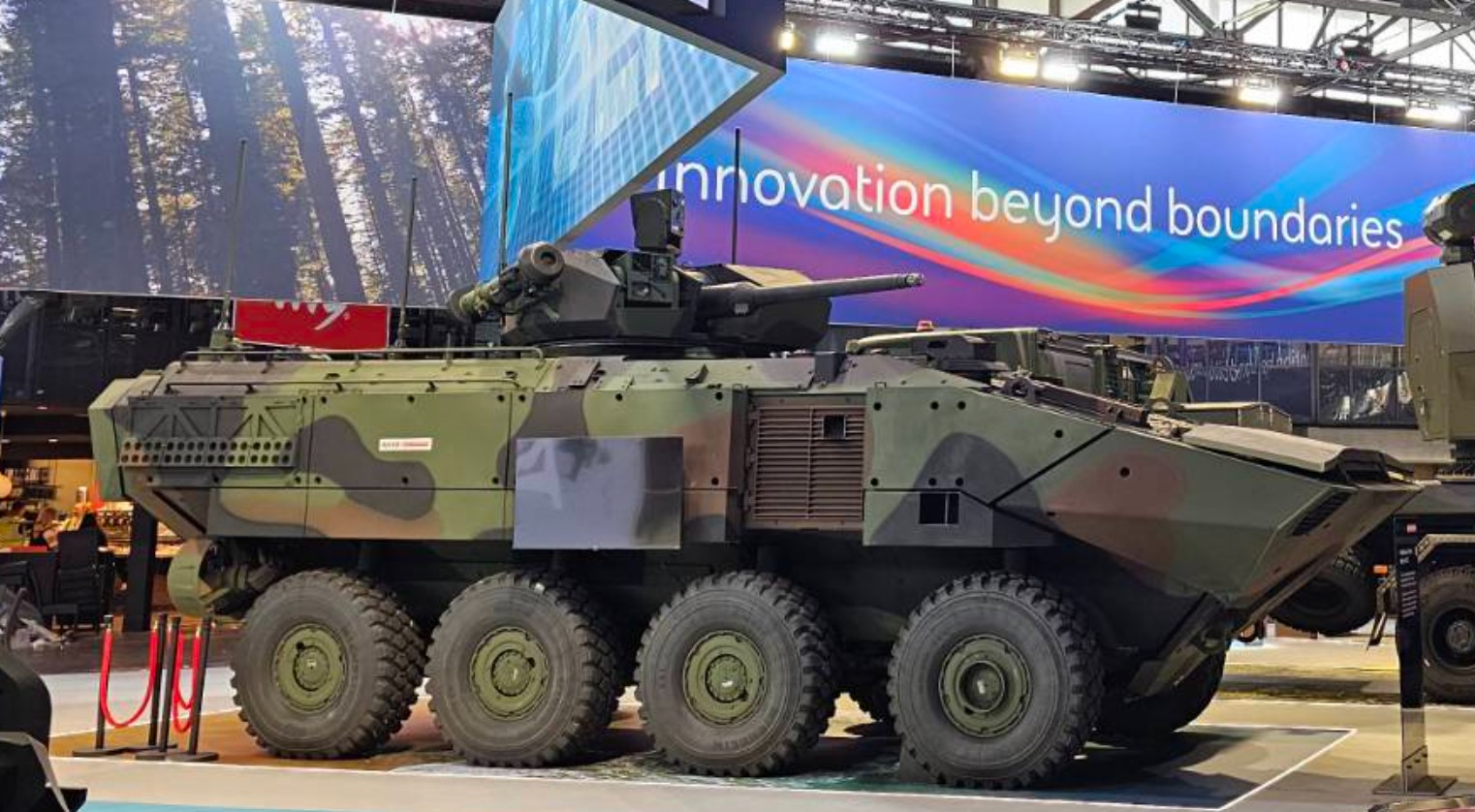
Last but not least, BAE Systems, in collaboration with its strategic partners Iveco Defence Vehicles, KONGSBERG, and the Marine Corps, demonstrated the Amphibious Combat Vehicle ACV-30 variant, which mounted a stabilized, 30 mm medium caliber cannon intended for Marine-type operations.
Next to the ACV Personnel (ACV-P) variant, the ACV Command and Control (ACV-C) variant, and the ACV Recovery (ACV-R) variant, ACV-30 is the fourth variant in the ACV family of vehicles.
Each customizable ACV variant in the family of vehicles provides open-ocean capability, land mobility, survivability, and growth potential to meet the evolving operational needs of Marines around the world.

Photo: BAE Systems
ACV-30’s specifications:
- Speed (land/sea): 105 km/h / 6+ Knots
- 8×8 wheeled platform – IVECO H-Drive system
- Protection: Blast Resistant Hull (Mine, Improvised Explosive Device (IED), Kinetic Energy (KE) munitions, and overhead protection) / Active and Passive Protective Systems
- Automatic Fire Suppression System
- Transport capacity: 3 Crew + 8 Embarked Marines
- Optronics: Commander and Gunner with independent Day and Thermal Sights / Laser Range Finder / Pointer
- Armament: 30mm Medium Caliber Cannon, CUAS and anti-tank missile launcher integration capacity
With its modular design, the ACV is ready to provide Marines around the world the flexibility to address additional mission roles and integrate future technologies.
BAE Systems and IDV seek to create a Users Club once customers reach a certain threshold. This model proved valid in many cases, with more than one platform having its users club that favors the circulation of data and lessons learned, increasing the knowledge of all members both in operational and logistic issues concerning the vehicle.
Also read: Patria | Delivery of NEMO Navy mortar systems to the Swedish Amphibious Forces
READ MORE
Ticonderoga | The US Navy is extending the operational life of three cruisers
The US Navy has announced that it is extending the operational life of three Ticonderoga-class cruisers. The decision will…
Sea Warden | MBDA’s system to counter unmanned threats at EURONAVAL 2024
At the EURONAVALl 2024 exhibition, MBDA presented Sea Warden, a modular anti-drone system adapted to the naval environment that integrates…
THEON International | New orders amounting to €74 million having already exceeded €150 million in the 4th trimester
THEON INTERNATIONAL PLC (THEON) announced additional orders for the month of November. As a result of the…
UN | Iran has increased uranium enrichment to near weapons-grade levels
Iran has further increased its stockpile of uranium enriched to near weapons-grade levels, defying international pressure, according to…
Brazil | Arrests of military and police officers for plotting the assassination of President Lula
Brazilian police have arrested five officers accused of plotting a coup which included plans to overthrow the government following the…
Sweden | Leaflets with survival instructions in the midst of the Ukrainian crisis
Sweden started sending out five million leaflets to the country’s residents yesterday, urging them to prepare for a possible conflict…
Ukraine | The first ATACMS strike on Russian soil took place
The Ukrainian armed forces carried out their first strike on a border area within Russian territory with an ATACMS missile.
Finland | The first major NATO artillery exercise on its territory
The exercise is taking place in northern Lapland and is part of wider artillery exercises, which have been dubbed ‘Dynamic Front 25…









